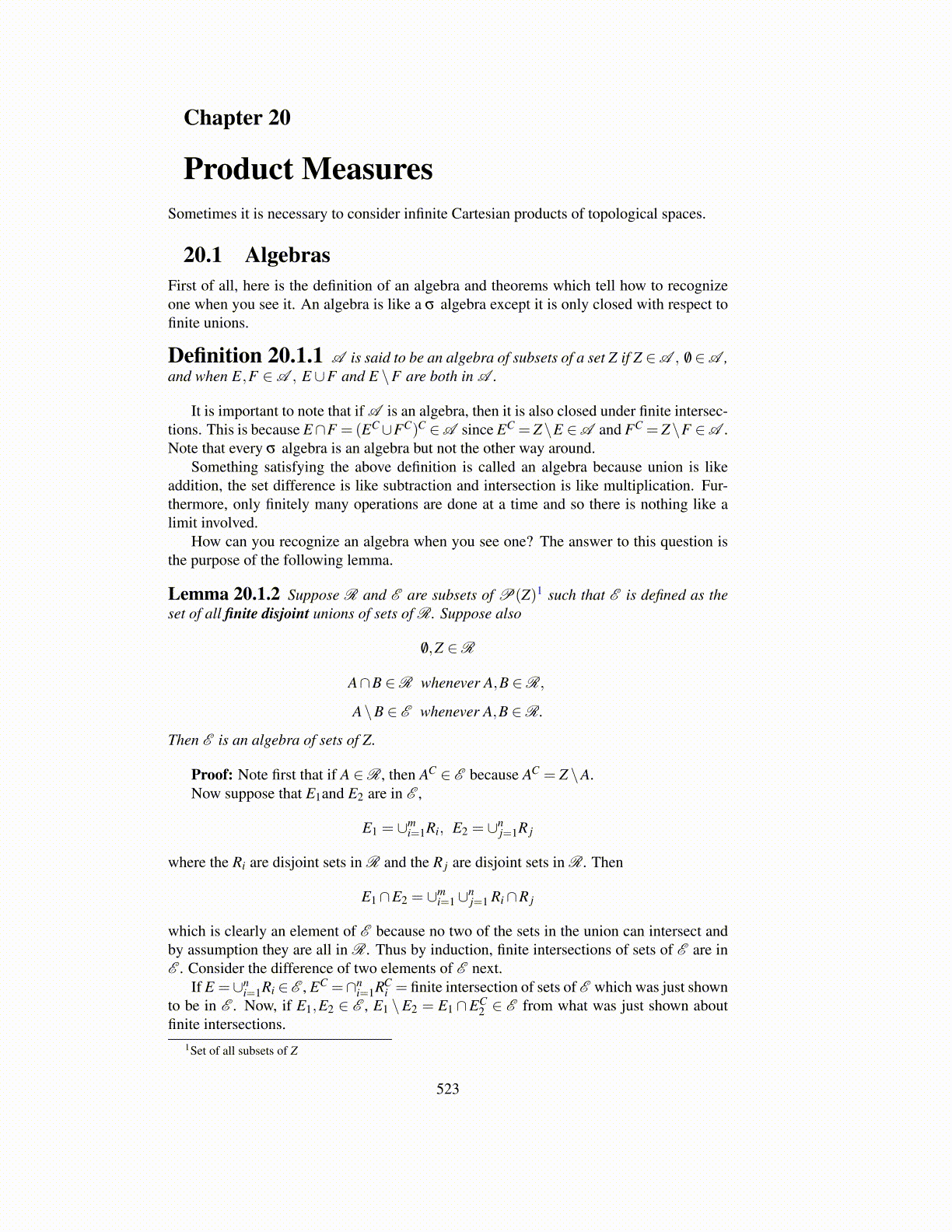
Chapter 20
Product MeasuresSometimes it is necessary to consider infinite Cartesian products of topological spaces.
20.1 AlgebrasFirst of all, here is the definition of an algebra and theorems which tell how to recognizeone when you see it. An algebra is like a σ algebra except it is only closed with respect tofinite unions.
Definition 20.1.1 A is said to be an algebra of subsets of a set Z if Z ∈A , /0∈A ,and when E,F ∈A , E ∪F and E \F are both in A .
It is important to note that if A is an algebra, then it is also closed under finite intersec-tions. This is because E∩F = (EC∪FC)C ∈A since EC = Z\E ∈A and FC = Z\F ∈A .Note that every σ algebra is an algebra but not the other way around.
Something satisfying the above definition is called an algebra because union is likeaddition, the set difference is like subtraction and intersection is like multiplication. Fur-thermore, only finitely many operations are done at a time and so there is nothing like alimit involved.
How can you recognize an algebra when you see one? The answer to this question isthe purpose of the following lemma.
Lemma 20.1.2 Suppose R and E are subsets of P(Z)1 such that E is defined as theset of all finite disjoint unions of sets of R. Suppose also
/0,Z ∈R
A∩B ∈R whenever A,B ∈R,
A\B ∈ E whenever A,B ∈R.
Then E is an algebra of sets of Z.
Proof: Note first that if A ∈R, then AC ∈ E because AC = Z \A.Now suppose that E1and E2 are in E ,
E1 = ∪mi=1Ri, E2 = ∪n
j=1R j
where the Ri are disjoint sets in R and the R j are disjoint sets in R. Then
E1∩E2 = ∪mi=1∪n
j=1 Ri∩R j
which is clearly an element of E because no two of the sets in the union can intersect andby assumption they are all in R. Thus by induction, finite intersections of sets of E are inE . Consider the difference of two elements of E next.
If E =∪ni=1Ri ∈ E , EC =∩n
i=1RCi = finite intersection of sets of E which was just shown
to be in E . Now, if E1,E2 ∈ E , E1 \E2 = E1 ∩EC2 ∈ E from what was just shown about
finite intersections.1Set of all subsets of Z
523